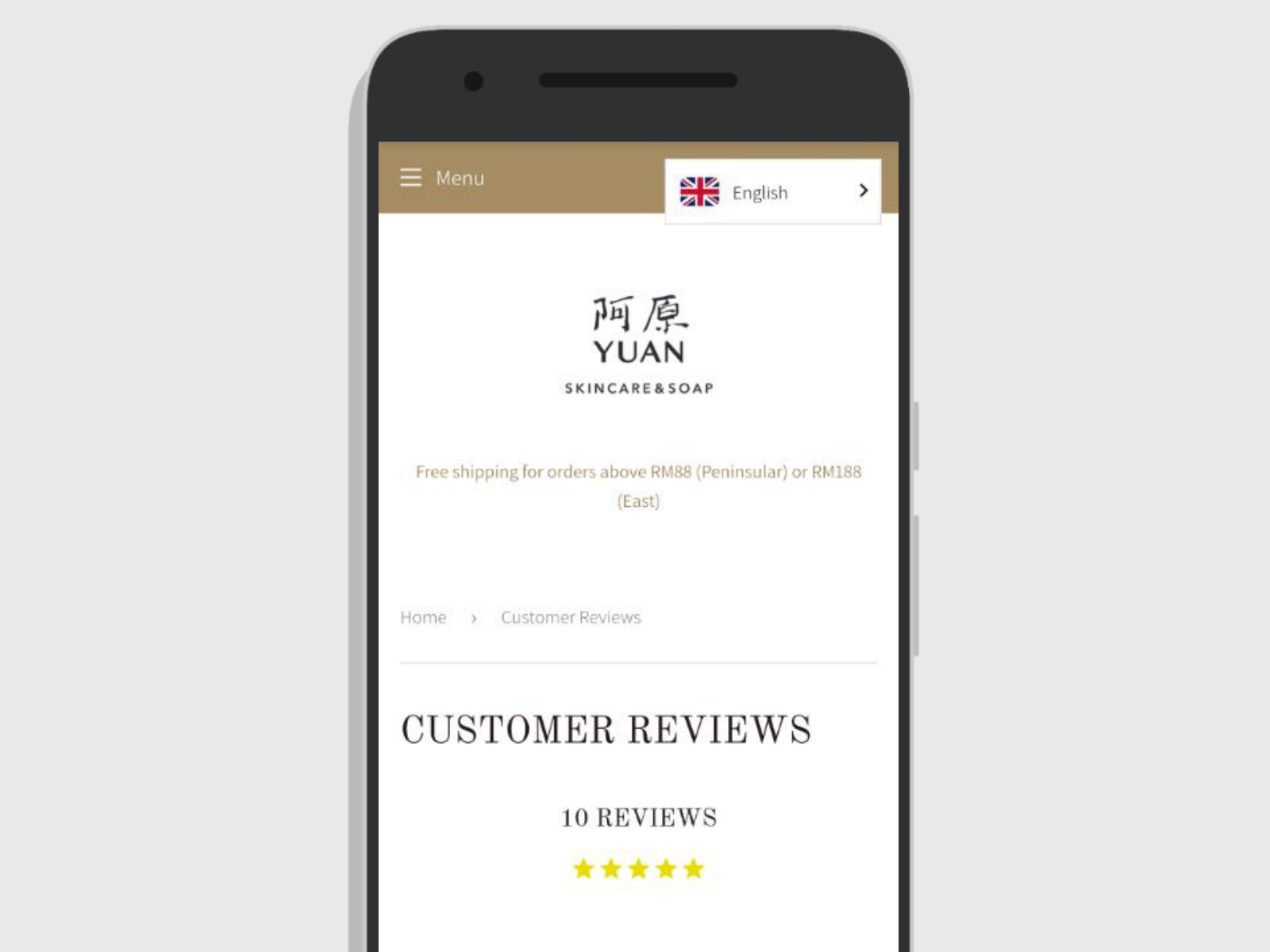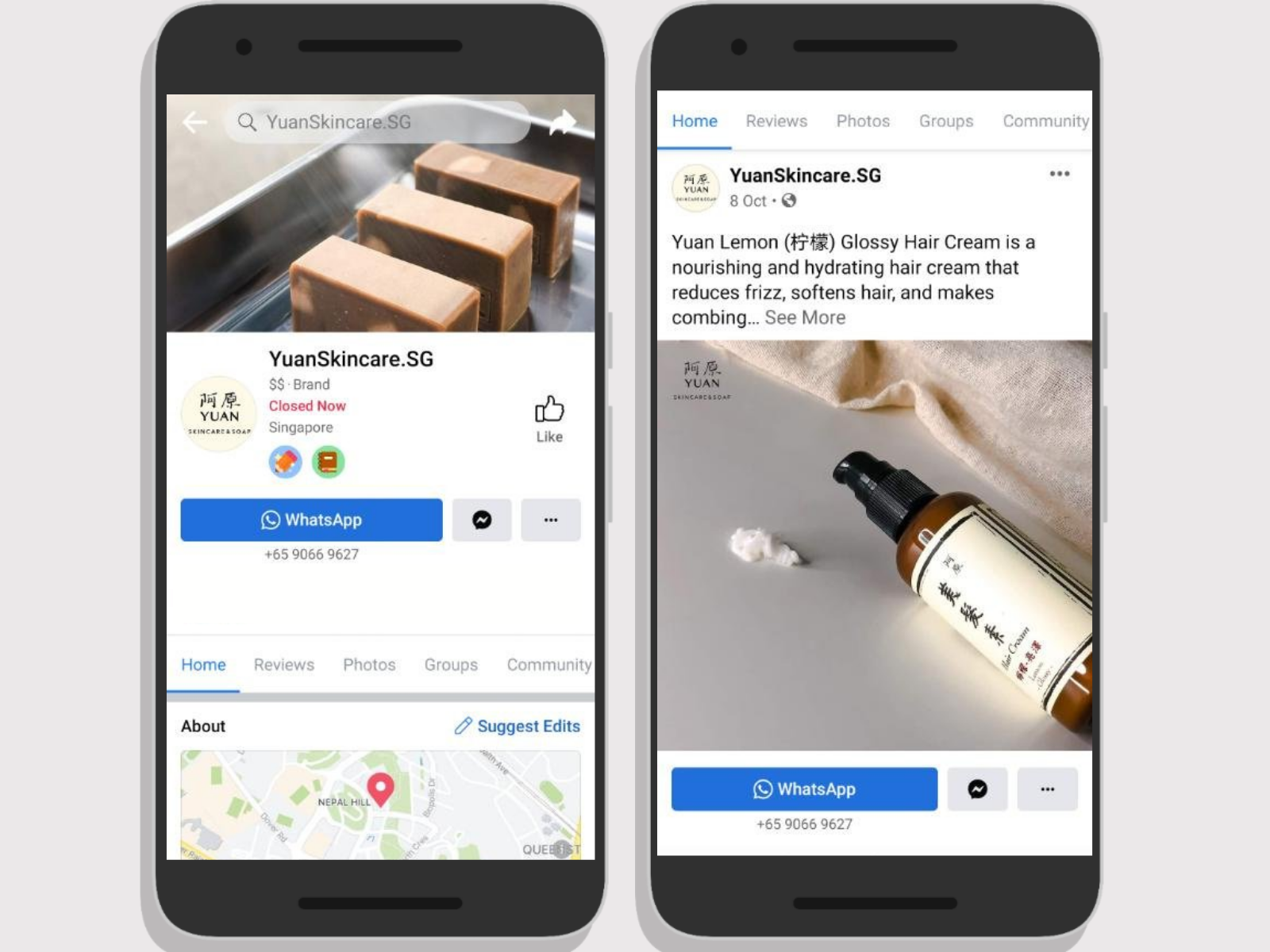Entering a large and highly diversified market like Malaysia could be challenging for businesses overseas. In this article, our very own Co-Founder and COO George Foo will be setting the record straight on how to effectively leverage Ecommerce and digital marketing for your brand’s growth.
George was recently invited as a key source for a segment in Leading the Way to SEA of HSBC – HongKong’s VisionGo to debunk several myths and misconceptions revolving Ecommerce and digital marketing towards audiences in Malaysia.
Ecommerce & Digital Marketing: When in Malaysia

Like most of its Southeast Asian neighbours, Malaysia’s Ecommerce industry has developed rapidly. And in recent years, players in China’s cross-border Ecommerce are eager to explore it for opportunities.
Want to know more about Malaysia’s Ecommerce landscape? Check out our previous articles.
- Yuan Skincare Malaysia Launches Shopify E-commerce Website
- Augustinus Bader Launched Official Singapore and Malaysia Ecommerce Stores
- Kao Biore Partners With Watsons for New Campaign
When entering a new market and facing unfamiliar consumers, sellers may encounter and possess several myths and misconceptions. Read on to know what George has to say about them.
Myth No. 1: Online celebrity marketing and live streaming always work in Malaysia
Truth: Live selling as a trend has just started in Southeast Asia, and language is the biggest obstacle
Many Chinese sellers hope to leverage online celebrity marketing and live selling promotion in Malaysia.

These two methods have been very successful in their domestic markets. However, they do not necessarily apply to markets in Malaysia where population composition, language system, and cultural customs are more diversified than Greater China.
Great numbers of Malays, Chinese, and Indians, who speak in different languages, make up most of Malaysia’s population of 90 million people.
But determining which language to employ for live selling shows is only the tip of the iceberg. Businesses must also consider that doing so could be subject to some restrictions stemming from religious practices.
Therefore, if a brand wants to live broadcast their products, choosing one language is equivalent to giving up the audience in other languages. Not to mention the target audience age, your customer base could be reduced significantly to the extent it may no longer present itself as an opportunity for your brand’s growth.
Truth 2: Instead of doing promotion featuring online celebrities, building reputation should be the 1st step.

Launching live selling videos without proper planning could also be hurting your finances since hiring internet celebrities to showcase your brand and products is costly.
George pointed out that for cross-border Ecommerce sellers, particularly those who are running online shops on big Ecommerce platforms such as Lazada and Shopee, their top priority should be improving their brand image and reputation.
Malaysian consumers make purchase decisions based on store reviews, so a quicker and cheaper method is to ask an “evaluator”.
George also recommends to sellers to use low prices to attract more customers to buy their products. He added that brands must encourage buyers to write reviews in order to increase store exposure and stand out on the platform. The more such evaluations, the better.
Newly opened online stores must have at least 50 positive reviews to attract future customers.
Truth 3: Hosts doing live broadcast are more cost-effective than internet celebrities

After an online store generated significant amount of traffic, sellers can consider executing live selling shows again.
For cross-border Ecommerce companies that want to use live broadcasts as part of their marketing strategies, George suggested that they should not use influencers immediately. Employing the expertise of hosts who understand the product’s selling points is sufficient.
In George’s view, in Malaysia and other markets in Southeast Asia, live broadcasts play a big role in product display.
A host doing live-selling has the ability to not only highlight a product’s features but they can also demonstrate them in real-time, ultimately enabling buyers to better understand the product. If customers are interested, they can place an order in real time or enter the store to browse products at any time.
Myth 2: Email Marketing is Not Useful in Southeast Asia
Truth: Email Marketing is Highly Effective in Reinforcing Customer Retention

Although domestic buyers in China are more accustomed to receiving business news through WeChat push notifications and other methods, the same thing cannot be said for consumers based in Southeast Asia.
George pointed out that Southeast Asians are accustomed to checking emails on a daily basis, making email marketing not only as a more common marketing technique in Southeast Asia but also as an important strategy for businesses engaged in cross-border Ecommerce.
George believes that email marketing is more than just sending product introductions and promotional reminders. It is highly effective in maintaining and strengthening customer retention.
Sellers can send emails to maintain old customers or encourage new customers to buy.
For example, when a customer adds an item to the shopping cart but fails to pay, the store can send an email to remind the customer to pay, or attach a discount code to the email. For regular customers, if there is no repurchase for a long time, the store can also use emails to attract customers to visit the website again to buy.
Myth 3: One Social Media Ring to Rule Them All
Truth: Localised Social Media Presence is Key to Effective Brand Awareness

According to the Southeast Asian Digital Development and Mobile Ecological Report released by Facebook and Beluga in 2019, Southeast Asians rely heavily on social media. In average, they spend 3 hours and 8 minutes on social media daily, a rate higher than the global average.
In addition, a considerable number of Southeast Asians do their research on brands and products on social networking sites.
As a result, George suggested to cross-border sellers that creating and managing social media handles for their brands on Facebook, Instagram, to name some, must be the first chapter on their roadmap to entering markets in Malaysia.
But they should be mindful, once again, of the country’s highly diversified audience. Not only does Malaysia have a diverse consumer group, but other Southeast Asian countries also have different languages, religions, and cultures.
Therefore, creating a post for one market cannot be automatically applied to other types of markets.
George said that brands should open different social media accounts in different countries, and publish contents appropriate for a country’s culture and identity.
Furthermore, different platforms have different regulations on the length of posts and the scale of pictures, and the browsing habits of users vary from platform to platform. Sellers should also pay attention to flexible changes when posting.
The problems that cross-border sellers encounter in the Malaysian market usually stem from their lack of understanding of national conditions, culture, habits, etc., so they often apply domestic marketing methods directly to the Malaysian market. George reminds all cross-border sellers, whether they are on Ecommerce platforms, social media channels or SEO, “localization” is a concern that merchants need to solve right away.
Truth 2: Social media is not a promotional field. We must focus on building and showing our brand image
According to George’s observation, many businesses mistakenly use social media as a promotional field, and publish all their discounts and promotions. But this will only decrease the appeal of your homepage or feed, giving off the wrong impression that your brand belongs in the low-end spectrum, and devaluing your over-all brand image.
The correct approach is to publish more exquisite and interesting content, interact with customers more, and create a brand image. The necessary promotional information can be released using time-limited dynamics.
Do Cross-Border Ecommerce and Digital Marketing the Right Way
Ecommerce marketing is not rocket science but businesses should do away with myths and misconceptions surrounding it to effectively leverage it for their brand’s growth. As a digital media agency based in Singapore, Digital 38 has supported over 100 brands for their Ecommerce and digital marketing needs.
Our team is ready to provide you end-to-end marketing solutions. Contact us today.
Texts on this article are the English translation from an interview between HSBC’s B2B platform HSBC Jihui and Digital 38. See the original version from HSBC’s VisionGo by clicking this link.
#Digital38 #EcomAgency #Ecommerce #crossborderecommerce #ecommercemalaysia #malaysia







